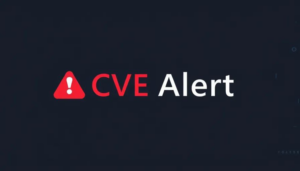CVE Alert: CVE-2025-9504 – Campcodes – Online Loan Management System
CVE-2025-9504
A vulnerability was detected in Campcodes Online Loan Management System 1.0. Affected by this vulnerability is an unknown functionality of the file /ajax.php?action=save_plan. The manipulation of the argument ID results in sql injection. The attack can be executed remotely. The exploit is now public and may be used.
AI Summary Analysis
**Risk verdict**: Publicly exploitable remote SQL injection with unauthenticated access; urgent remediation recommended.
**Why this matters**: Attackers can read or tamper data and degrade availability, risking customer information and loan processing operations. The publicly available PoC and exploit increase automated scanning and rapid opportunistic abuse, with potential financial and regulatory consequences.
**Most likely attack path**: An attacker issues a crafted HTTP request to the vulnerable endpoint, supplying a manipulated ID parameter. No user interaction or authentication is required, enabling remote access to the database and potential data exfiltration or record modification, with limited but meaningful impact on confidentiality, integrity and availability.
**Who is most exposed**: Internet-facing deployments of the affected loan-management system are at greatest risk, particularly organisations hosting web-facing loan apps in SMB-to-mid-market environments without timely patching.
**Detection ideas**:
- Monitor for anomalous requests to the vulnerable endpoint with unusual or crafted ID values.
- Alert on database errors or syntax-related exceptions appearing in app logs or HTTP 500 responses.
- Watch for spikes in DB query latency or resource usage following exposure to the endpoint.
- Enable WAF/IDS signatures that match SQL injection patterns targeting the endpoint.
- Look for unusual data outputs or exfiltration attempts from the application layer.
**Mitigation and prioritisation**:
- Apply vendor patch or upgrade to the fixed version; if unavailable, implement compensating controls and restrict access to the affected endpoint.
- Enforce parameterised queries and strict input validation; ensure the web app uses least-privilege DB accounts.
- Implement network controls and authentication barriers around the app; consider disabling or isolating the vulnerable pathway.
- Deploy strengthened input sanitisation, logging, and anomaly detection; enable targeted WAF rules for SQLi patterns.
- Plan a patch window with testing in staging, verify backups, and prepare incident response playbooks in case of partial exploitation.
A considerable amount of time and effort goes into maintaining this website, creating backend automation and creating new features and content for you to make actionable intelligence decisions. Everyone that supports the site helps enable new functionality.
If you like the site, please support us on “Patreon” or “Buy Me A Coffee” using the buttons below
To keep up to date follow us on the below channels.

![[Palo Alto Networks Security Advisories] CVE-2025-4614 PAN-OS: Session Token Disclosure Vulnerability 1 Palo_Alto_Networks_Logo](https://www.redpacketsecurity.com/wp-content/uploads/2025/02/Palo_Alto_Networks_Logo-300x55.png)

